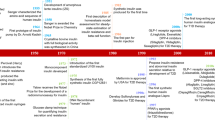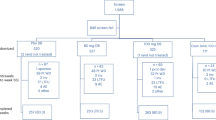Abstract
Noninvasive tools to quantitate transgene expression directly are a prerequisite for clinical gene therapy. We established a method to determine location, magnitude, and duration of low-densitiy lipoprotein (LDL) receptor (LDLR) transgene expression after adenoviral gene transfer into LDLR-deficient Watanabe hypercholesterolemic rabbits by following tissue uptake of intravenously injected 111In-labeled LDL using a scintillation camera. Liver-specific tracer uptake was calculated by normalizing the counts measured over the liver to counts measured over the heart that represent the circulating blood pool of the tracer (liver/heart (L/H) ratio). Our results indicate that the optimal time point for transgene imaging is 4 h after the tracer injection. Compared with control virus-injected rabbits, animals treated with the LDLR-expressing adenovirus showed seven-fold higher L/H ratios on day 6 after gene transfer, and had still 4.5-fold higher L/H ratios on day 30. This imaging method might be a useful strategy to obtain reliable data on functional transgene expression in clinical gene therapy trials of familial hypercholesterolemia.
This is a preview of subscription content, access via your institution
Access options
Subscribe to this journal
Receive 12 print issues and online access
$259.00 per year
only $21.58 per issue
Buy this article
- Purchase on Springer Link
- Instant access to full article PDF
Prices may be subject to local taxes which are calculated during checkout





Similar content being viewed by others
References
Haberkorn U, Altmann A . Imaging methods in gene therapy of cancer. Curr Gene Ther 2001; 1: 163–182.
Ray P et al. Monitoring gene therapy with reporter gene imaging. Semin Nucl Med 2001; 31: 312–320.
Wiebe LI, Knaus EE . Enzyme-targeted, nucleoside-based radiopharmaceuticals for scintigraphic monitoring of gene transfer and expression. Curr Pharmacol Des 2001; 7: 1893–1906.
Liang Q et al. Noninvasive, repetitive, quantitative measurement of gene expression from a bicistronic message by positron emission tomography, following gene transfer with adenovirus. Mol Ther 2002; 6: 73–82.
Delepine P et al. Visualization of the transgene distribution according to the administration route allows prediction of the transfection efficacy and validation of the results obtained. Gene Therapy 2002; 9: 736–739.
Lerondel S et al. Radioisotopic imaging allows optimization of adenovirus lung deposition for cystic fibrosis gene therapy. Hum Gene Ther 2001; 12: 1–11.
Yang X et al. Magnetic resonance imaging permits in vivo monitoring of catheter-based vascular gene delivery. Circulation 2001; 104: 1588–1590.
Goldstein JL, Hobbs HH, Brown MS . Familial hypercholesterolemia. In: Scriver CR, Beaudet AL, Sly WS, Valle D (eds). The Metabolic and Molecular Basis of Inherited Disease. McGraw-Hill: New York, 2001, pp 1981–2030.
Bilheimer DW, Goldstein JL, Grundy SM, Starzl TE . Liver transplantation to provide low density lipoprotein receptors and lower plasma cholesterol in a child with homozygous familial hypercholesterolemia. N Engl J Med 1984; 311: 1658–1664.
Ishibashi S et al. Hypercholesterolemia in low density lipoprotein receptor knockout mice and its reversal by adenovirus-mediated gene delivery. J Clin Invest 1993; 92: 883–893.
Yamamoto T et al. Deletion in the cysteine-rich region of LDL receptor impedes transport to cell surface in WHHL rabbit. Science 1986; 232: 1230–1237.
Watanabe Y . Serial inbreeding of rabbits with hereditary hyperlipidemia (WHHL-rabbit). Incidence and development of atherosclerosis and xanthoma. Atherosclerosis 1980; 36: 261–268.
Kozarsky KF et al. In vivo correction of low density lipoprotein receptor deficiency in the Watanabe heritable hyperlipidemic rabbit with recombinant adenovirus. J Biol Chem 1994; 269: 13695–13702.
Li J et al. In vivo gene therapy for hyperlipidemia: phenotypic correction in Watanabe rabbits by hepatic delivery of the rabbit LDL receptor gene. J Clin Invest 1995; 95: 768–773.
Grossman M et al. A pilot study of ex vivo gene therapy for homozygous familial hypercholesterolemia. Nat Med 1995; 1: 1148–1154.
Moerlein SM, Daugherty A, Sobel BE, Welch MJ . Metabolic imaging with gallium-68 and indium-111 labeled low-density lipoprotein. J Nucl Med 1991; 32: 300–307.
Leitha T et al. Parenchymal and nonparenchymal uptake of technetium-99m, indium-111, and iodine-125 low-density lipoprotein in the normal and estradiol-stimulated rat liver: tracer validation for quantitative low-density lipoprotein scintigraphy. Hepatology 1995; 22: 1289–1295.
Rosen JM et al. Indium-111-labeled LDL: a potential agent for imaging atherosclerotic disease and lipoprotein biodistribution. J Nucl Med 1990; 31: 343–350.
van Berkel TJ et al. Scavenger receptor classes A and B. Their roles in atherogenesis and the metabolism of modified LDL and HDL. Ann N Y Acad Sci 2000; 902: 113–126.
Steinbrecher UP . Receptors for oxidized low density lipoprotein. Biochim Biophys Acta 1999; 1436: 279–298.
Leitha T et al. Technetium-99m labelled LDL as a tracer for quantitative LDL scintigraphy. I. Tracer purification, in vitro and in vivo long-term stability, in vitro validation and biodistribution. Eur J Nucl Med 1993; 20: 667–673.
Leitha T et al. Technetium-99m-labelled LDL as a tracer for quantitative LDL scintigraphy. II. In vivo validation, LDL receptor-dependent and unspecific hepatic uptake and scintigraphic results. Eur J Nucl Med 1993; 20: 674–679.
Adams JY et al. Visualization of advanced human prostate cancer lesions in living mice by a targeted gene transfer vector and optical imaging. Nat Med 2002; 8: 891–897.
Bell JD, Taylor-Robinson SD . Assessing gene expression in vivo: magnetic resonance imaging and spectroscopy. Gene Therapy 2000; 7: 1259–1264.
Heeren J et al. Nonphysiological overexpression of low-density lipoprotein receptors causes pathological intracellular lipid accumulation and the formation of cholesterol and cholesteryl ester crystals in vitro. J Mol Med 1999; 77: 735–743.
Cichon G et al. Complement activation by recombinant adenoviruses. Gene Therapy 2001; 8: 1794–1800.
Schmidt HH-J et al. In vivo kinetics as a sensitive method for testing physiologically intact human recombinant apolipoprotein A–I: comparison of three different expression systems. Clin Chim Acta 1997; 268: 41–60.
Schmidt HH-J et al. Delayed low density lipoprotein (LDL) catabolism despite a functional intact LDL-apolipoprotein B particle and LDL-receptor in a subject with clinical homozygous familial hypercholesterolemia. J Clin Endocrinol Metab 1998; 83: 2167–2174.
McFarlane AS . Efficient trace-labeling of proteins with iodine. Nature 1958; 182: 53.
Acknowledgements
We are indebted to Sigrid Ohlendorf and Regina Haas for excellent technical assistance. This work was supported by a grant from the Bundesministerium für Bildung und Forschung (FKZ: 01KV9549/4 and 01KV9904).
Author information
Authors and Affiliations
Rights and permissions
About this article
Cite this article
Tietge, U., Cichon, G., Büttner, C. et al. A sensitive noninvasive method for monitoring successful liver-directed gene transfer of the low-density lipoprotein receptor in Watanabe hyperlipidemic rabbits in vivo. Gene Ther 11, 574–580 (2004). https://doi.org/10.1038/sj.gt.3302206
Received:
Accepted:
Published:
Issue Date:
DOI: https://doi.org/10.1038/sj.gt.3302206



